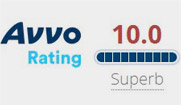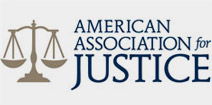By: Lisanne L. Mikula, Esquire
While the call for a significant hike in the minimum wage rate has dominated headlines, the United States Department of Labor (“DOL”) is poised to issue a Final Rule in the next several months which will entitle millions of white-collar workers to collect overtime pay, despite their current status as “exempt” salaried employees.
An employee may be exempt from receiving overtime pay provided the following tests are met: (1) the employee must be paid a predetermined and fixed salary that is not subject to reduction because of variations in the quality or quantity of work performed; (2) the amount of salary paid must meet a minimum specified amount; and (3) the employee’s job duties must primarily involve executive, administrative, or professional duties as defined by the regulations.
It is the second test—the minimum salary threshold—which is about to change dramatically once the DOL issues its proposed Final Rule.
For decades, the minimum salary threshold to qualify for overtime exemption has remained at $455 per week ($23,660 annually). The DOL’s proposed rule more than doubles the minimum annual salary threshold to a projected $970 per week ($50,440 per year) for 2016. The proposed rule also provides for an automatic increase in the minimum salary threshold as an adjustment for inflation, so employers will need to continuously monitor whether their salaried employees meet the minimum salary threshold each year.
The DOL estimates that 5 million workers who are currently exempt salaried employees will no longer meet the threshold minimum salary requirement under the proposed rule, making these employees eligible for overtime payments.
The big question is when will the proposed rule become effective? According to the Semi-Annual Regulatory Agenda of Fall 2015, the final rule is expected to be issued by July 2016. The change may come a bit sooner than that, however. On March 15, 2016, the DOL sent its final rule revising the white collar exemptions to the White House’s Office of Management and Budget for review-a process which typically takes approximately 30 to 60 days. The final rule could be published any time after that review is complete, although it is likely that the DOL will provide a grace period of at least 60 days after issuance of the final rule before its implementation.
The attorneys at the Law Firm of DiOrio & Sereni, LLP are experienced and available to help you navigate thru the upcoming changes in the wage laws. Contact Lisanne L. Mikula, Esquire at 610-565-5700, or send her an e-mail at [email protected].
*****FOR AN UPDATE ON THE OUTCOME OF THE FINAL RULE PLEASE SEE PAMELA A. LEE, ESQUIRE’S 05.18.16 BLOG*****
Like what you see? Join our mailing list













